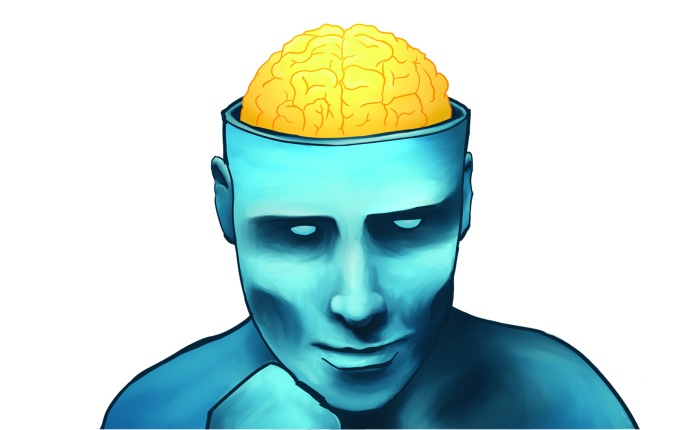The Hard Problem of Consciousness refers to the baffling challenge of understanding how the human brain is capable of having subjective experience: how could a 1.4kg lump of moist, grayish tissue inside your skull give rise to something as mysterious as the experience of being that grayish lump, and the body to which it is attached?
This is also known as the mind/body problem.
And why can’t the world’s greatest minds solve this mind/body problem?
Is Consciousness exclusive to humans or do animals also have Consciousness?
Are there different levels of Consciousness? When does a human embryo become Conscious? Or is it already Conscious?
Does sperm have any measurable level of Consciousness?
What happens to Consciousness when you die? Is this what some people refer to as a ‘Soul’?
And when one is on a death bed, does Consciousness gradually dissipate or is it like an ON/OFF switch?
So many questions, but very few and vague answers… this is why it is called The Hard Problem of Consciousness.
To start off, what is the definition of Consciousness? When we do a dictionary search we find results such as:
con·scious·ness
/ˈkän(t)SHəsnəs/
noun
the state of being awake and aware of one’s surroundings.
“she failed to regain consciousness and died two days later”
“state of being awake and aware of one’s surroundings”... that’s pretty vague, it’s like saying ‘an engine’ when asked what makes a care move. We need to know how that engine works, what different parts it is made of and how each parts interacts and works.
Well, actually, we know most of this already about the brain: we know of the cerebrum, the brainstem and the cerebellum. We know about neurons and their communication with other cells via specialized connections called synapses.
We have mapped most of the different regions of the brain. Yet we can’t locate Consciousness.
There are researchers that are trying to find a physical location in the brain where Consciousness might be located. In my opinion they will never find it, because Consciousness is the sum of all the brain parts.
Take for example a corpus callosotomy. The corpus callosum is a fiber bundle consisting of about 300 million fibers in the human brain that connects the two cerebral hemispheres. A corpus callosotomy is a surgical procedure performed on epilepsy patients in which the corpus callosum is cut, partially or fully, separating connections between the left and right hemispheres of the brain in an effort to prevent seizures from spreading. One would easily think that this could cause a ‘split’ personality, where two different Consciousness would fight for dominance. This does not happen even if it appears that way from the outside. After the operation the brain has much more difficulty sending messages between the hemispheres. The functions of the corpus callosum include the integration of perceptual, cognitive, learned, and volitional information. The most prominent non-surgical complications of corpus callosotomy relate to speech irregularities. Another complication is alien hand syndrome, in which the afflicted person’s hand appears to take on a mind of its own. Patients can experience something called “hemispheric rivalry,” in which they are seen attempting opposing behaviors with their left and right hands in a disturbing battle such as trying to button up their shirt with one hand while the other hand is busy at work unbuttoning it. Because of their odd behavior, from the outside this could come across as split personality, however, these patient are just as Conscious as before the operation.
So, if the corpus callosotomy does not affect Consciousness, how much brain can be isolated or removed before Consciousness goes away?
The problem is that we don’t understand what Consciousness really is and how it comes into being, let alone trying to quantify it.
The mind-body problem is now know as the “Hard Problem” of consciousness. Philosopher David Chalmers coined this term in his paper and in his book, “The Conscious Mind: In Search of a Fundamental Theory.”
Chalmers thought the mind-body problem should be called “hard” in comparison to what, amusingly, he called the “easy” problems of neuroscience.
How neurons and the brain work at the physical level of course is not actually easy at all. But his point is that they’re relatively easy compared to the truly difficult problem of explaining how consciousness relates to matter.
One of the latest theory point to resonance, the “resonance theory of consciousness” is kind of interesting.
This is an article I started writing over a year ago and I chipped away at it couple of times since.
Until today.
Today, as I held my unconscious mother’s hand as she was slowly dying, while I was reliving the good memories we had, I couldn’t stop thinking about her Consciousness right there and then.
She was a great soul, which we can only hope it continues on a wonderful journey.
It may take a long time before we find Consciousness’ location, being it physical or not. But is it such a bad thing that it remains a mystery?
Not really, in my opinion there are some things that should remain as such.
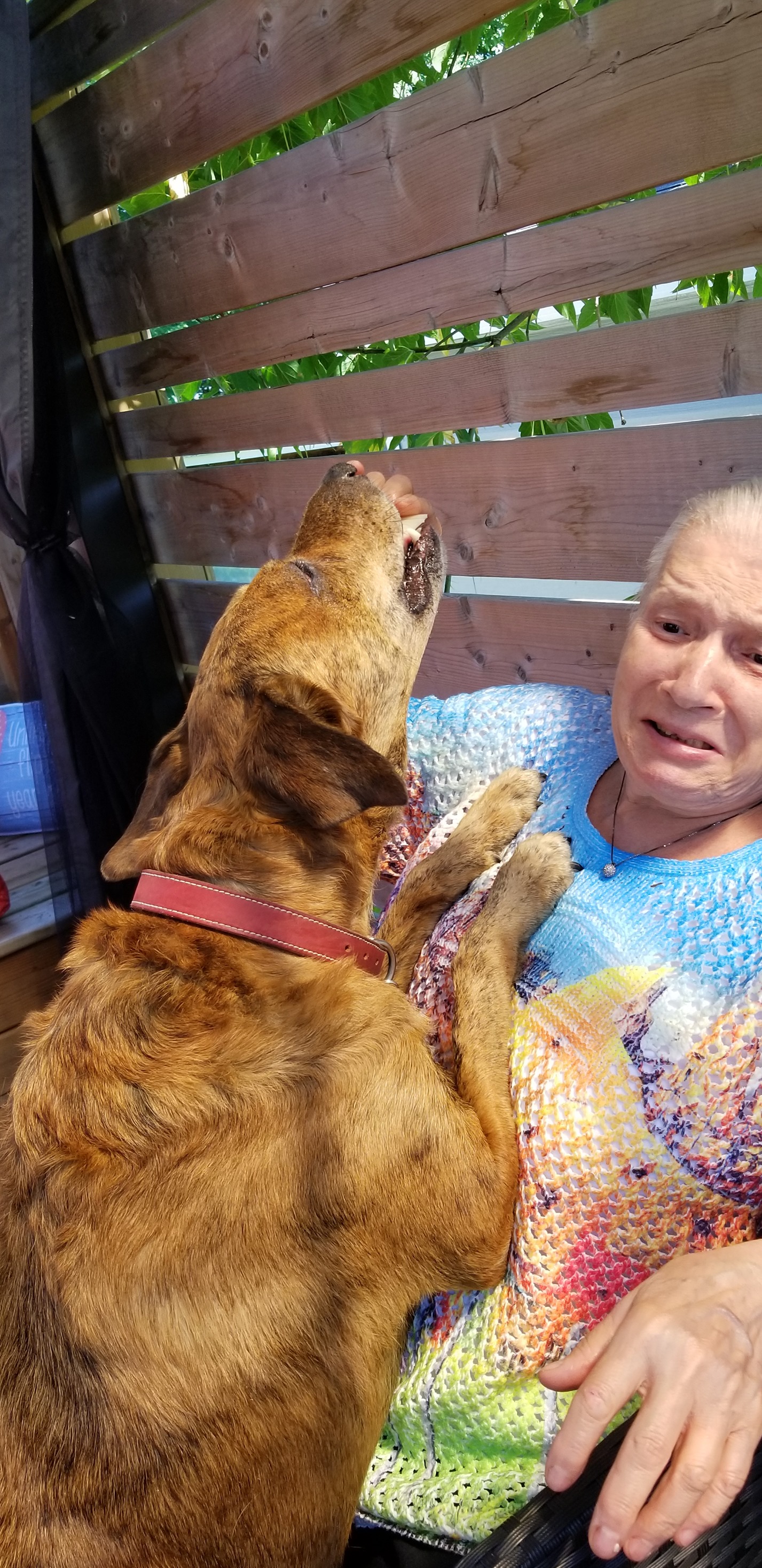
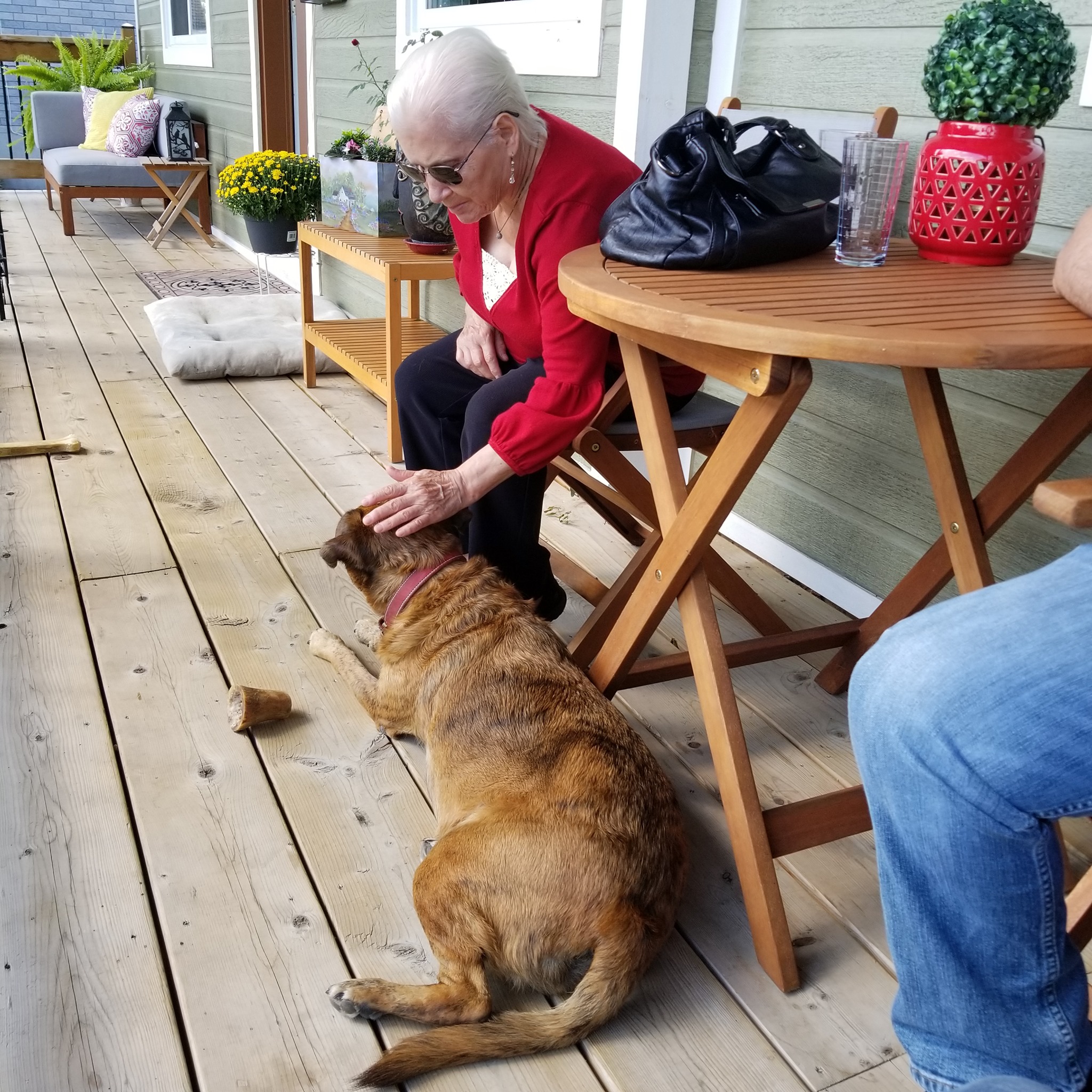
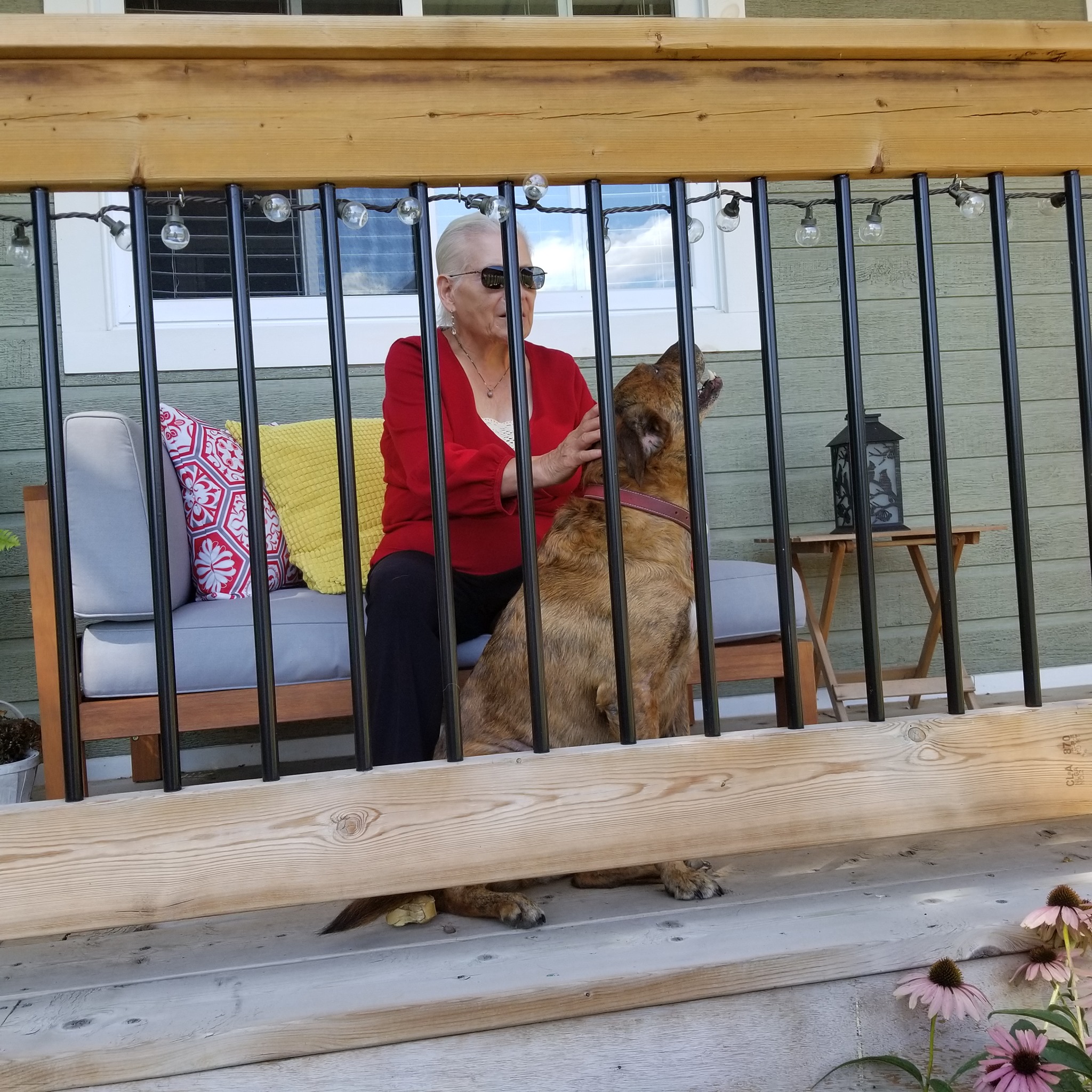
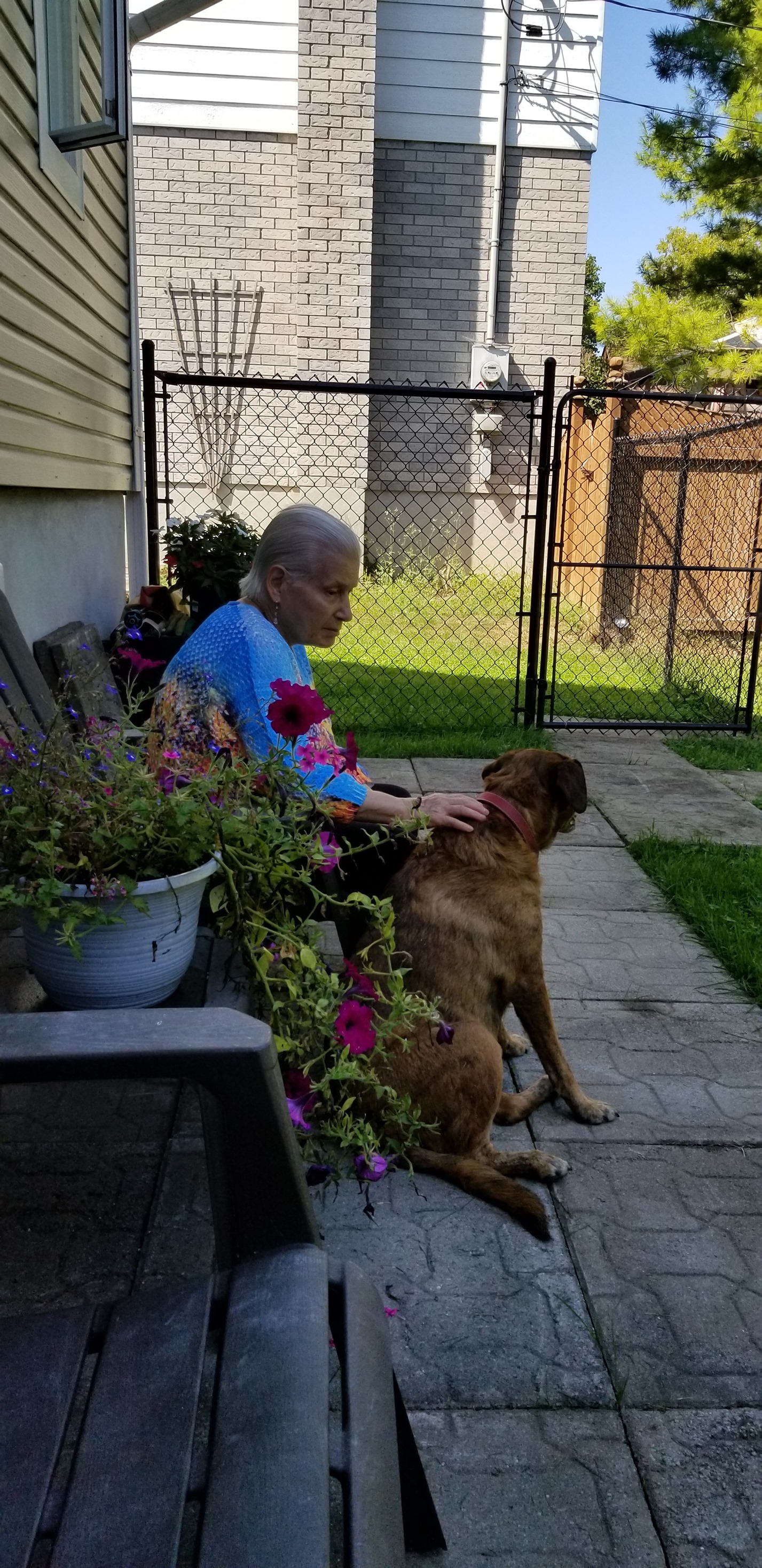
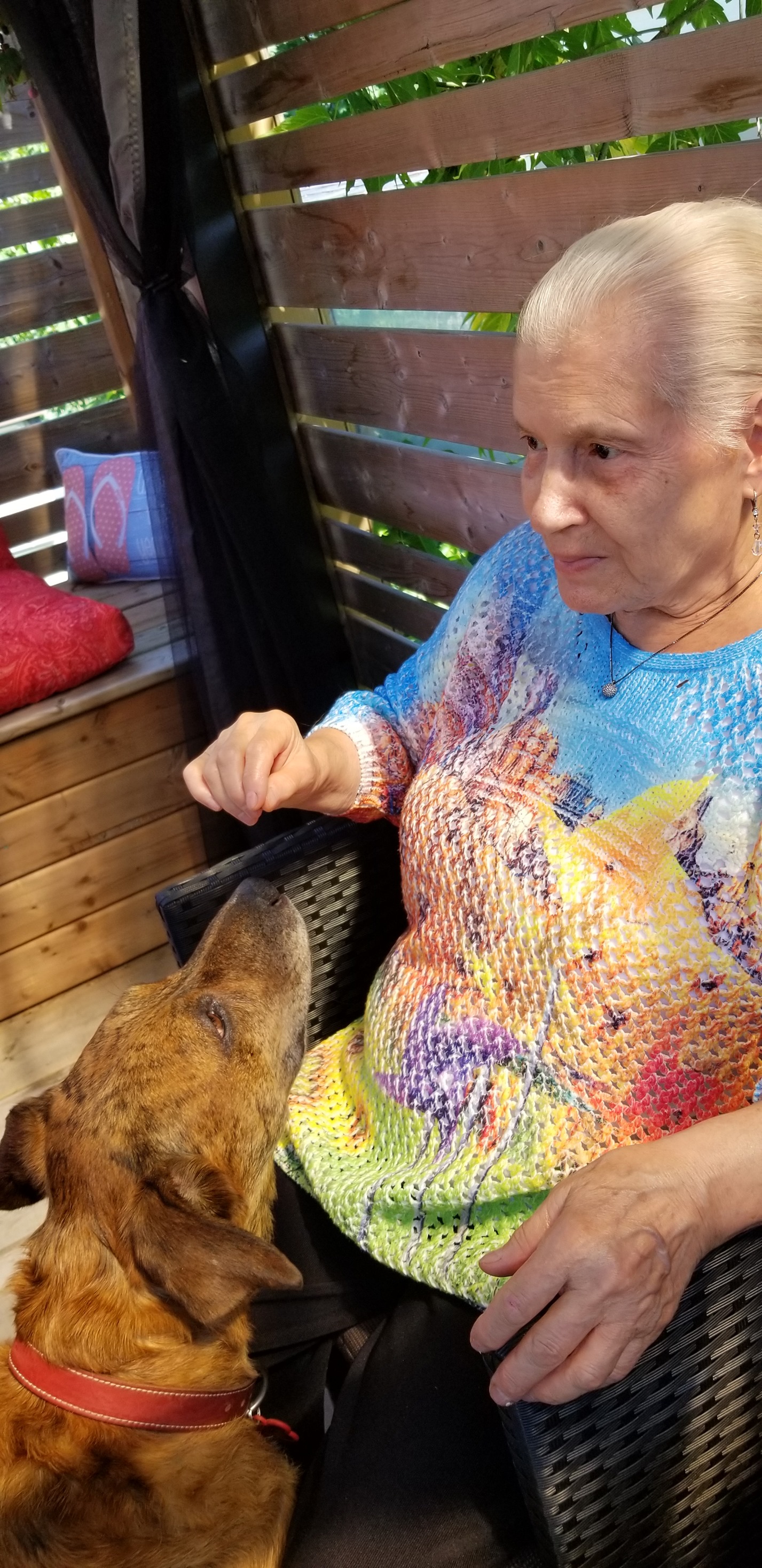
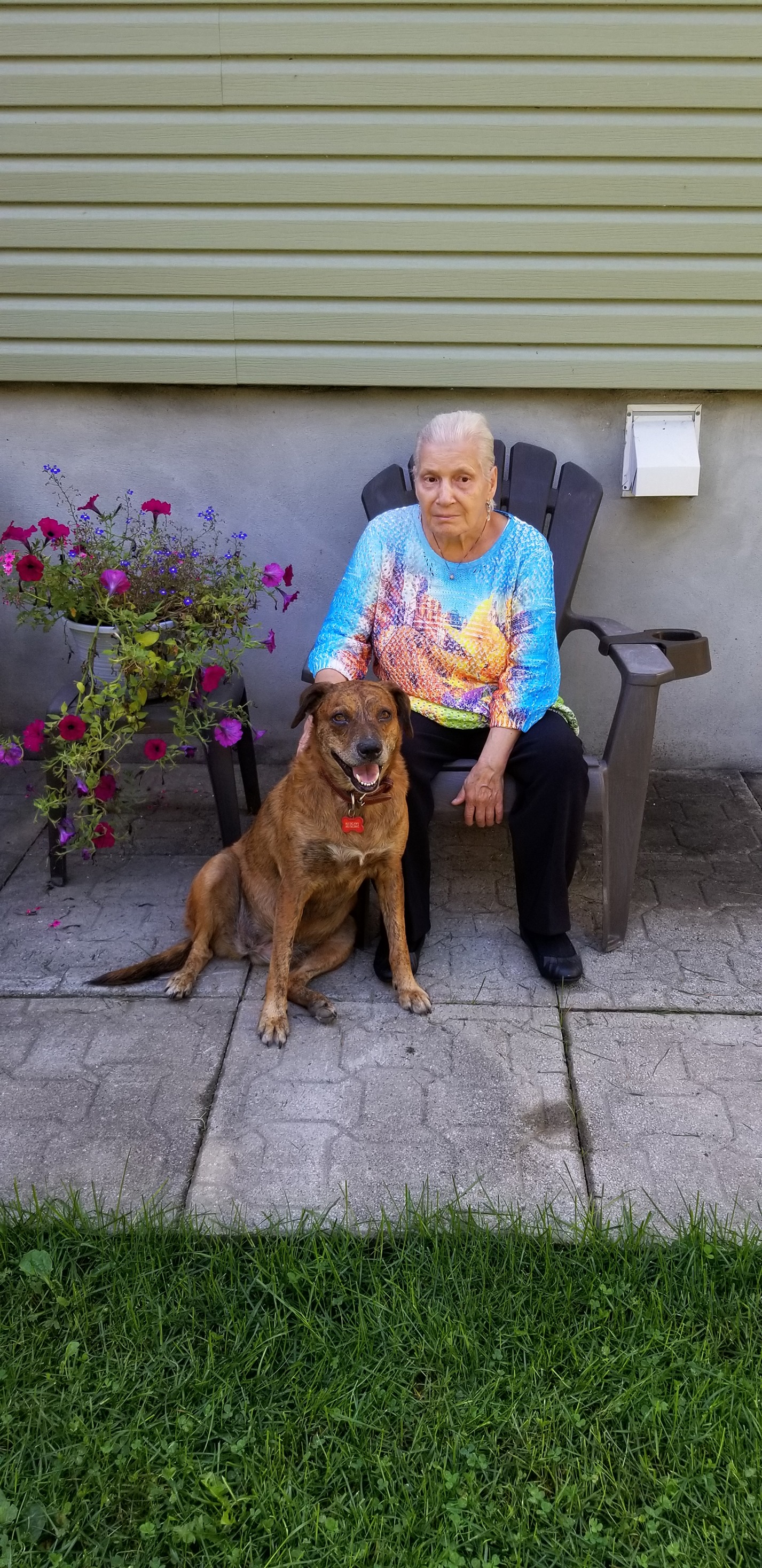
My mom was terrified of dogs since she was a little girl, but our dog Prada converted her.
Featured Image Copyright: This work by Matthew Willis is licensed under a Creative Commons Attribution 4.0 International License
